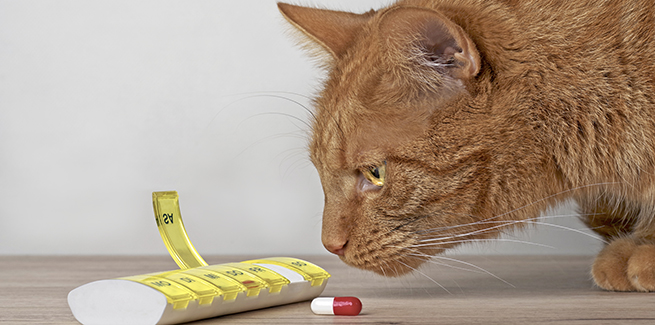ASPCA celebrates pet poison control milestone

March is National Pet Poison Prevention Month, and the American Society for the Prevention of Cruelty to Animals (ASPCA) is celebrating a pet poison prevention milestone: The ASPCA’s Animal Pet Poison Control Center (APCC) has handled more than four million cases of potential pet toxicity since it opened in 1978.
That’s because veterinary toxicology is pretty much all they do.
“By being able to concentrate only on toxicology, the vets at the APCC are able to keep up with new toxins and treatment options to help veterinarians manage their cases,” Tina Wismer, DVM, DABVT, DABT, the APCC’s medical director, told NEWStat.
The only facility of its kind, the APCC operates a 24-hour-a-day, 365-days-a-year hotline that serves as a critical and trusted resource for pet owners and veterinarians nationwide and maintains a staff of 70 veterinarians—including 11 board-certified veterinary toxicologists—supported by 100 certified veterinary technicians and 13 veterinary assistants. An exhaustive database called AnTox that helps identify and describe the toxic effects of substances in animals allows the APCC to collect more patient data than any other veterinary toxicology medical system in the world.
And boy, are they busy.
In 2021, the APCC call volume increased more than 22% as the team assisted 401,550 animals of all sizes and species across all 50 states, with cases ranging from gardening product toxicity to essential oil ingestion.
Human OTC medications are the biggest threat
AnTox enables APCC toxicologists to compare data on cases of pet poisonings from year to year and compile an annual list of the top ten pet toxins. Topping the list for the fourth year in a row—and making up more than 17% of the Center’s call volume—are human over the counter (OTC) medications.
Although human food items such as chocolate tend to get most of the pet-toxin press, the APCC says that human medications are actually more dangerous due to a combination of their accessibility to pets around the home and pets’ smaller size.
Gumbo’s story
Last year, a one-year-old Dachshund named Gumbo chewed open a plastic baggie grab-bag of their owners’ medication, including ibuprofen, acetaminophen, and a sleep-aid containing melatonin. By the time his panicked owners got him to his veterinarian, Gumbo had vomited, was having trouble breathing, and had developed methemoglobinemia, a condition affecting the red blood cells that causes a decrease in oxygen availability to organs and tissues.1
Gumbo’s veterinarian contacted the APCC, and the medical experts on duty recommended emergency treatment for acetaminophen toxicity.
After three-and-a-half days in the hospital—during which APCC staff worked closed with Gumbo’s vet to provide life-saving treatment—the Dachshund was well enough to go home.
Most common pet toxins of 2021
The remaining items on the top five toxin list, which made up more than 79% of the APCC’s total cases in 2021, include:
- Human prescription medications– these came in at number two, with antidepressants, cardiac, and ADHD medications being the main concern. Like OTC medications, they can lead to gastrointestinal upset and life-threatening illness such as kidney failure in severe cases.
- Food products– these remain near the top of the list at number three, making up 14% of APCC cases last year. The most common food product cases include ingestion of protein bars and shakes, xylitol, garlic and onions, and grapes and raisins.
- Chocolate – clocking in at number 4 for several years running, the APCC takes calls on more than 103 cases of chocolate ingestion per day, or more than one case every 15 minutes.
- Indoor and outdoor plants – as gardening continued to be popular pandemic hobby last year, indoor and outdoor plants remained in the top five. APCC received 7,500 more calls related to plant ingestion in 2021 compared to 2020.
In addition to responding to calls from veterinarians, shelters, and pet owners, APCC veterinarians also do retrospective data research on past cases to better understand toxicity risks and impact in pets. In 2021, they made the groundbreaking discovery that the toxic component in grapes is tartaric acid, a mystery that had baffled the veterinary community for more than 20 years.
Photo credit: © Lightspruch/iStock/Getty Images Plus via Getty Images



